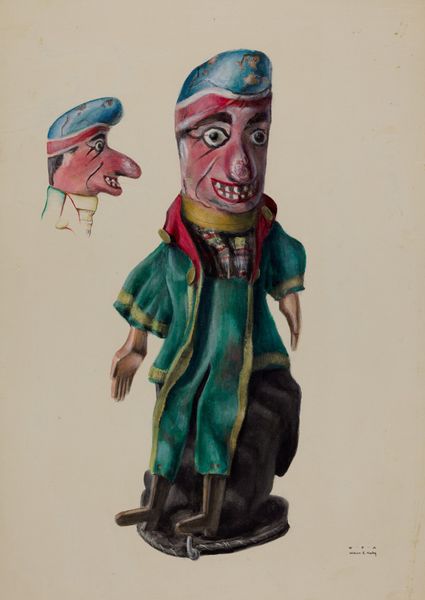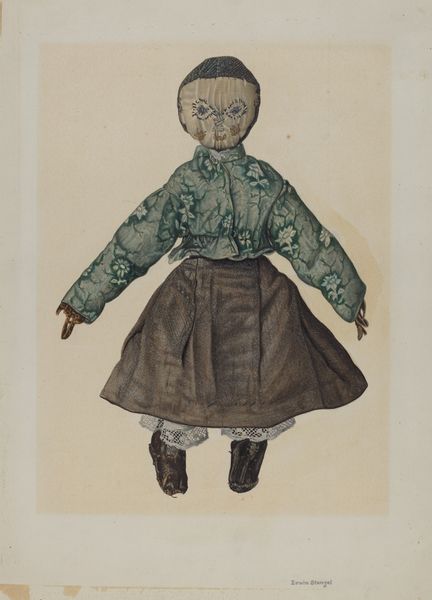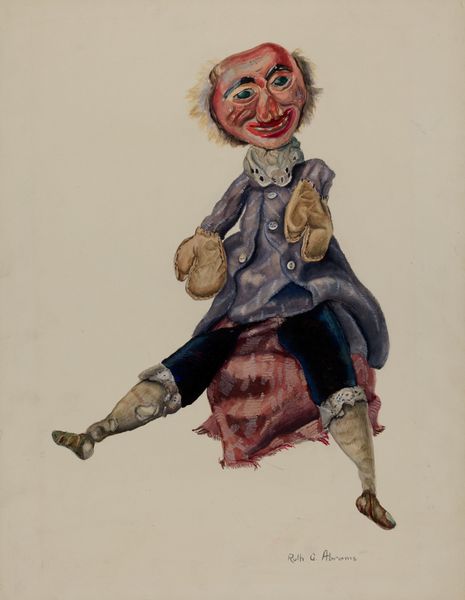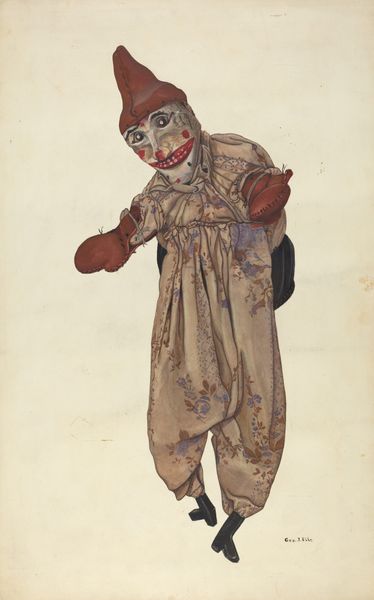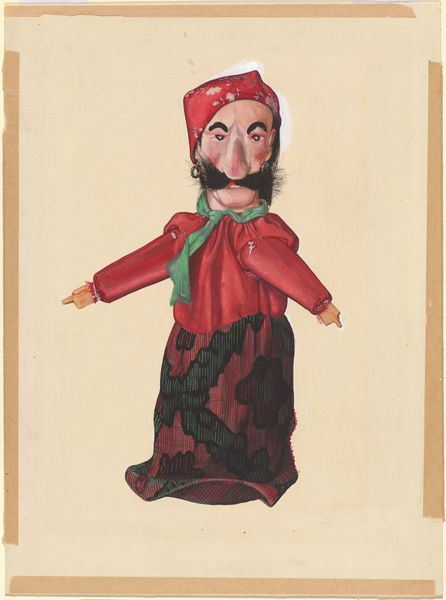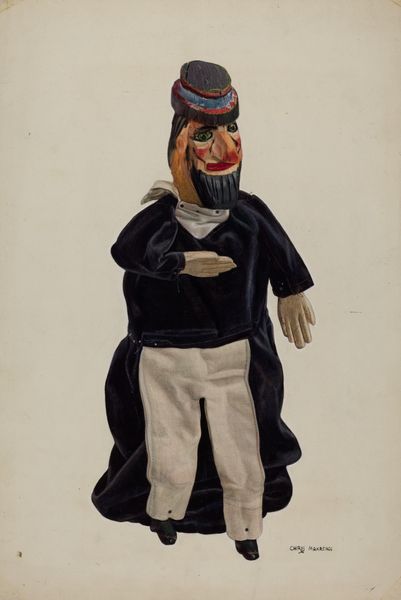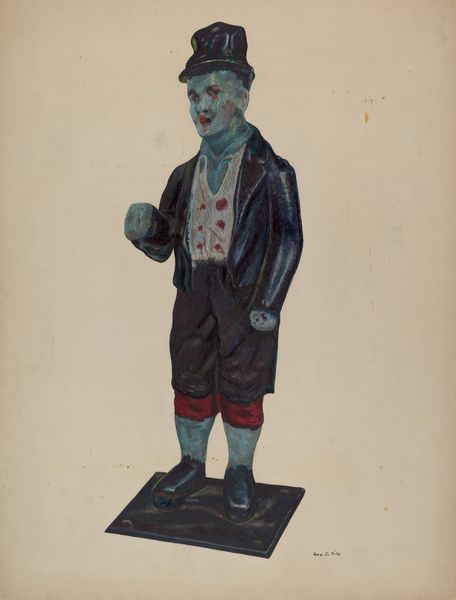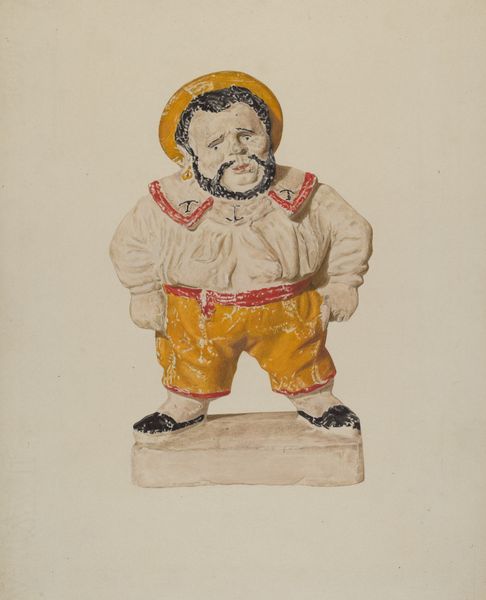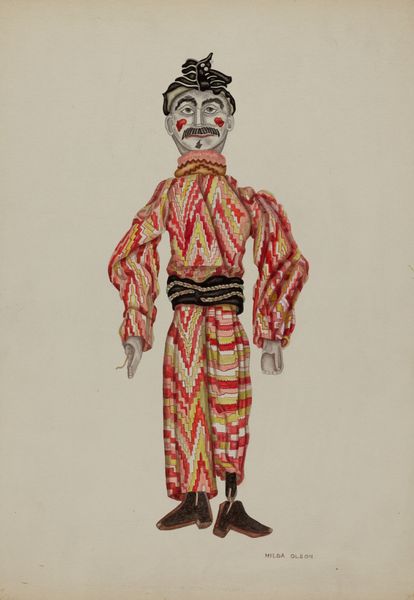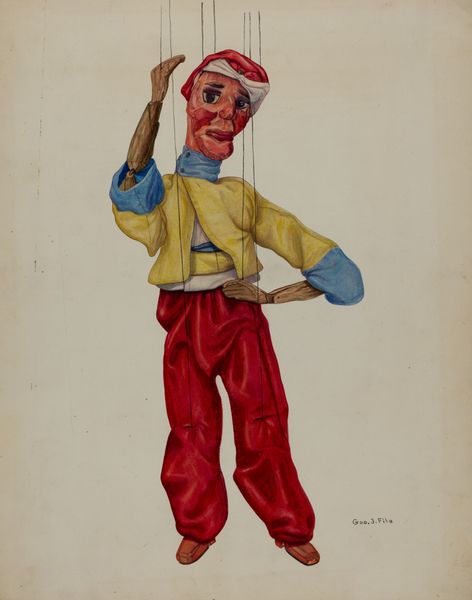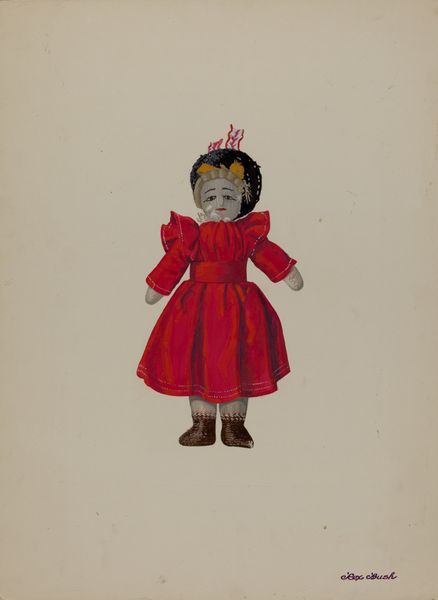
drawing, watercolor
#
drawing
#
caricature
#
caricature
#
watercolor
#
naïve-art
#
naive art
#
watercolour illustration
Dimensions: overall: 41.3 x 30.5 cm (16 1/4 x 12 in.) Original IAD Object: 12" high
Copyright: National Gallery of Art: CC0 1.0
Editor: Here we have Dorothy Brennan's watercolor and ink drawing, "Hand Puppet Judy," circa 1936. It's quite striking! There's a childlike simplicity to it, but also something a bit unsettling in the puppet's expression. What do you see in this piece? Curator: It's a seemingly innocent image, isn't it? But within that "naïve" aesthetic, we can explore how representations of childhood and entertainment were often deployed to reinforce very specific social norms and anxieties. Consider the history of puppetry; traditionally, puppets were not just for kids. They could be powerful tools for satire, social commentary, even dissent. Editor: So, this seemingly harmless puppet might be reflecting something darker? Curator: Exactly! What kind of "Judy" is this? How does she relate to the famous Punch and Judy characters and its deeply problematic undertones? Think about the gender roles, the violence, the power dynamics inherent in that form of entertainment. What is being reproduced or challenged here? Also, who was Dorothy Brennan? Was she critiquing the expectations of childhood and performance, or complicit in them? Editor: That's fascinating! I hadn't considered the connection to Punch and Judy, or how this piece reflects gender roles. It definitely complicates my initial reaction. Curator: And it challenges us to look beyond the surface, doesn’t it? How do social power structures present themselves in even the simplest images? How do artists –consciously or unconsciously– reproduce the world around them in their art? Editor: It’s definitely made me rethink what I initially saw as simply a quaint drawing. Curator: Me too. The work reminds us that art holds cultural meanings far beyond initial, aesthetic assessments. It can serve as evidence of broader power dynamics that are often unspoken, but deeply felt.
Comments
No comments
Be the first to comment and join the conversation on the ultimate creative platform.

